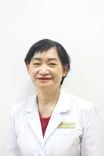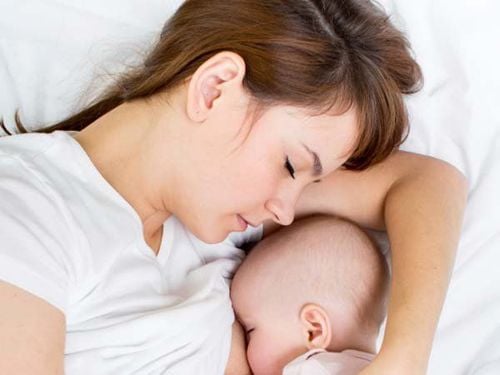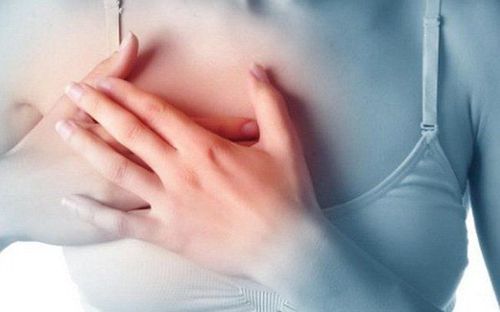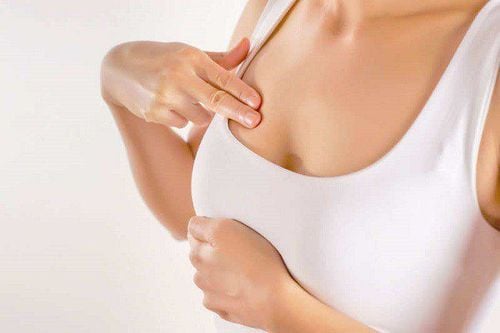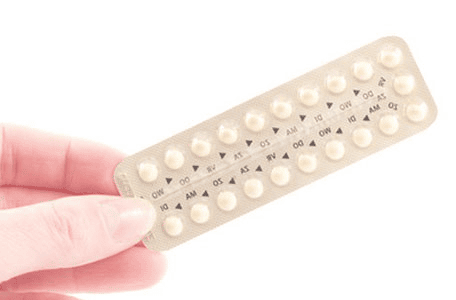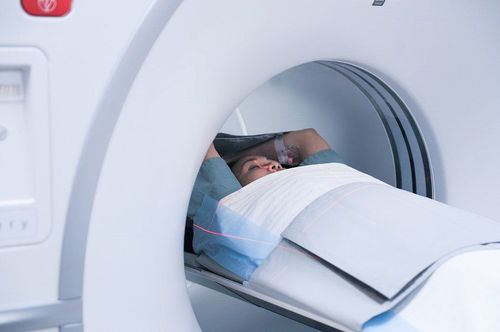This is an automatically translated article.
The article was professionally consulted by Specialist Doctor I Le Hong Lien - Department of Obstetrics and Gynecology - Vinmec Central Park International General Hospital.Strange tumor appearing in the breast makes many people worry. However, these tumors can be benign and not as scary as people think. Most of the common benign tumors in the breast are fibroadenomas of the breast, fibroadenomas of the breast, or mammary syphilis,...
1. Fibroid disease of the mammary gland
Fibrocystic mammary gland disease is formed due to the predominance of tubules, lobes, or interlobular stroma, leading to fibrous tissue changes and the formation of sacs or cysts that give the breast a prominent organization. This condition does not increase the risk of breast cancer.In women between puberty and the age of 30, the lobules and stroma in the breast respond to excessive endocrine activation, leading to the formation of one or more fibroadenomas. Between the ages of 30 and 50, the degree of "bloom" of the breasts often increases. This is the expression of an increase in the gland, that is, an increase in the normal lobular component. The stroma is also enlarged, so there are many palpable and lumpy particles in the breast. From 45 years of age to menopause, mammary gland tissue becomes more enlarged, combined with an increase in stromal tissue. At menopause, breast cysts are more common in women taking hormone replacement therapy.
2. Fibroids of the breast
Fibroids of the breast (also called fibroadenomas of the breast) are often seen in young women, when palpating the breasts, there are several round and smooth lumps like peanuts or longan seeds, which are mobile. Even if the tumor is slightly posterior or slightly enlarged, it is not necessary to worry too much, because this is usually a benign tumor. In this case, women need to go to the doctor for peace of mind and find a solution. If the tumor is small, usually only observation is needed.When the tumor is large, the specialist only needs to inject anesthetic, operate on the whole tumor, if a few months or a few years later, another lump grows elsewhere in the breast or the other breast, it is mostly a fibroid - a benign gland , so don't worry too much. In some cases, when young people squeeze the mammary gland between two fingers, they think they have a tumor. At this age, the milk glands are very developed, making it feel like a lump, especially when you are about to have a period.

3. Lymphoma of the mammary gland
The disease is common in the 15-30 year olds. In the breast there is a lump like a small granule, like a fibroadenoma, which normally lasts a year or two, suddenly enlarges rapidly. The breast skin is thin, there are many blue lines crossing over and over in the breast skin, the breast is larger.Lymphoma of the breast is usually benign, however, the doctor will usually give the patient a biopsy to be sure to rule out the possibility of malignancy (cancer). In these cases, women need to see a doctor. If it is a benign breast phyllodes tumor, only surgery is needed to remove the entire tumor. This method on the other hand also helps to preserve breast milk for expectant mothers.
4. Breast cyst (fluid)
Breast cysts usually "appear" in middle age. The cysts or sacs contain fluid. A cyst is just a cavity filled with fluid. This cavity is caused by a dilation of a section of the milk duct. These cysts are usually found only in women over the age of 40, but after menopause they can disappear spontaneously.Most people find it on their own when lying on their stomach with their stomach or rubbing in the shower. Because at that time, the breast cyst swells. But sometimes these cysts are painless and invisible. When a breast cyst is suspected, women need to see a specialist, do not wait until menopause for the cyst to collapse. Ultrasonography and biopsy will help the doctor determine the disease condition. Next, the fluid in the cyst will be drained.
After minor surgery, there may be one or more cysts appearing in other areas of the breast, causing many patients to mistakenly believe that this is a malignancy that is spreading to another area or that the old disease has recurred. In fact, most of these cases are just the ongoing occurrence of benign polycystic breast condition, until the menopause heals.
5. Fibroids of the breast
The tumor develops from the connective tissue between the lobules. Usually occurs before age 35. The tumor is characteristic, firm, fibrous, regular, round or ovoid, subcutaneously mobile, painless, unrelated to menstrual cycle. Size varies by 2 - 3 cm, usually there is only one tumor, sometimes there are many tumors and appear successively over time.This type of tumor is easy to diagnose among benign breast tumors. However, fine needle aspiration cytology should also be used to confirm the diagnosis and rule out cancer.
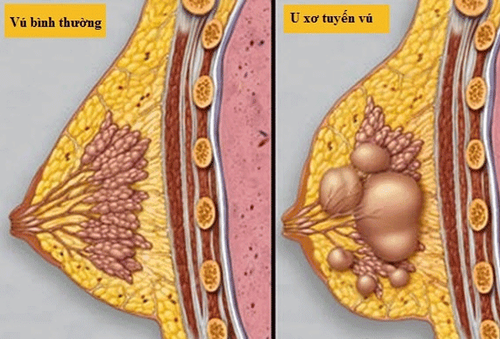
6. Hormonal disturbance in girls
Girls about 10-12 years old often have one breast slightly raised, causing both breasts to be uneven and slightly painful in the middle of the breast.This situation often causes parents to fear that their child has a malignancy of the breast or precocious puberty. However, this condition may be due to hormonal disturbances in girls. Parents should take their baby to see a doctor to be sure of the child's condition. Do not arbitrarily inject male hormones, or surgically remove a small "tumor" in the nipple.
7. Breast pain due to mammary gland heritage
When there is pain due to mammary gland heritage, examination reveals thickened milky tissues, no obvious lumps in both breasts.8. The nipple or areola is itchy, sore and watery
The condition is usually not due to a medical condition but to a bra allergy. Therefore, when at home, women should remove bras. In addition, should not wear bras that are too tight, change bras daily and clean them to avoid allergies.9. Breast abscess
Breast abscess is common in young mothers who give birth and breastfeed for the first time, about two or three weeks after giving birth. Symptoms of infection are very clear: the person has a fever, the breast is enlarged, the skin of the breast is red and very painful. Not breastfeeding can also cause an abscess, usually located around the areola.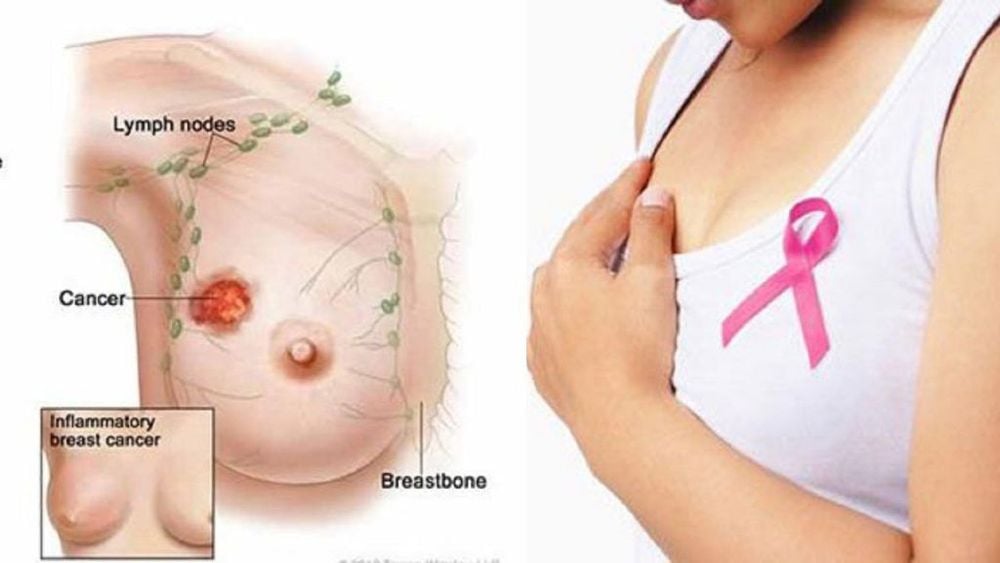
10. Watery, bleeding nipples
Causes are usually ductal, ductal inflammation, benign tumors in the ducts, and cancer in the ducts. The majority of cases occur under the age of 30. If fluid retention, bleeding from the nipple, women should see a specialist to check.11. Milk wrap
This condition is common in nursing mothers, when touching the breasts, there is a round, soft, grape-like mass or larger, often mushy. Sometimes only a few days, sometimes only a few months, no pain and can grow after engorgement. It is a cyst of milk, which is caused by the milk stagnation due to a blocked milk duct.In this case, the specialist may advise the mother to wean the baby if the baby is over 12 months old. At that time, the milk sac will gradually shrink and after a few months, it can disappear. If the baby is only a few months old, it is possible to continue to breastfeed, but accept that the breast milk can be large, causing discomfort, sometimes even pain due to superinfection. At this time, the mother is forced to wean her milk.
12. Inverted nipples
Inverted nipple is a condition in which the nipple is flat or lowered inward relative to the areola (instead of sticking out as usual). Both men and women can experience this condition. The inverted nipple in women during breastfeeding, will affect the child's breast-feeding.Although these are benign breast tumors, you should not be subjective, besides, when there are unusual manifestations in the breast. Breast cancer screening is essential and plays a very important role in helping patients accurately determine their health status.
Currently, Vinmec International General Hospital applies the aspiration treatment of benign breast tumors with the assisted biopsy technique of the ultrasound-guided vacuum suction device (VABB), which has opened up a new path. overcome the disadvantages of traditional surgical methods. Thanks to this method, instead of having to open surgery to remove the tumor as before, the doctor only needs to insert the needle of the VABB machine to cut the tumor and suck the tumor out. Patients will experience less pain and no scarring. Especially, it does not cause breast deformation, does not require hospitalization. The patient does not need to undergo many incisions to remove the tumor, but just a single needle piercing can handle tumors, even treat multiple tumors at the same time.
Please dial HOTLINE for more information or register for an appointment HERE. Download MyVinmec app to make appointments faster and to manage your bookings easily.
